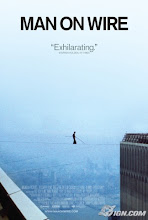Monday, November 16, 2009
Homosexuality in film
Anneke Smelik’s “Gay and Lesbian Criticism” explores homosexuality in cinema. Homosexuality was present in films since they began and is prominently featured in several films in our society as the issue of homosexuality has been pushed to the forefront. Early portrayals of homosexuals in films were stereotypical and insulting, reflecting the overwhelming prejudice and even hatred of homosexuality. Gays and lesbians were seen as the queen and the dyke, as something unnatural and scary like the sissy, the lesbian vampire, the unnatural woman, and the gay psychopath. Throughout history, the exposure of homosexuality in films, positive or negative, was heralded by the homosexual community; they needed to establish their identity in society. Today, in our society, homosexuals are more widely accepted, even with the legalization of gay marriage in some states. Homosexuality in films is more prevalent today and portrays gays and lesbians as humans rather than unnatural, abnormal beings. In The Business of Fancydancing, the main character, Seymour is a gay Native American who had left his reservation to pursue his career as a poet, alienating himself from his family and friends who believe he is abandoning their culture. When his childhood friend dies, Seymour returns to his old reservation and is forced to confront his family and old friends. Seymour’s homosexuality in the film does not play a large role in the plot; rather, the film deals with it very little. Seymour’s homosexuality lacks truth and depth; in one scene, Seymour offers to leave his lover to live with Agnes and simply tells her that they would not have sex to reinforce his sexuality. This scene reveals society’s mentality that gays are restricted to lovers but cannot marry or live together like heterosexual couples. In society today, this issue has been brought to the forefront and can be seen in many films. One of the most recent and notable films pushing gay rights is Milk, the story of Harvey Milk, a prominent figure in the gay rights movement in the 1970s and the first openly gay man to be voted in a major public office. The film does not skirt around Milk’s homosexuality like Seymour’s homosexuality in The Business of Fancydancing and portrays it simply as Milk’s sexuality, nothing more and nothing less. The film disregarded sexuality in its portrayal of Harvey Milk, making him human and honest, rather than a stereotypical and frail image of a gay man. Milk garnered sympathy for the gay rights cause and served as a film to provide hope to the gay community, especially in our society where gay rights activism has become more prominent with many heterosexuals supporting the cause now. Like in the past, homosexuality will always be portrayed in cinema; however, the idea of homosexuals is changing from the initial prejudice of these seemingly unnatural and disgusting group of people to a sympathetic view of gays and lesbians as people with different sexual preferences.
Subscribe to:
Post Comments (Atom)













No comments:
Post a Comment